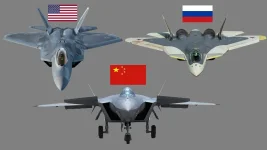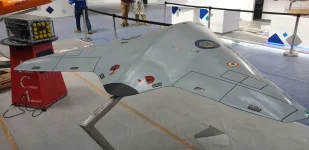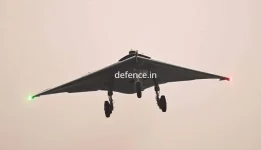- Views: 3K
- Replies: 31
As discussions regarding Indo-Russian defence cooperation intensify, reports suggest that Hindustan Aeronautics Limited (HAL) may repurpose a significant portion of its Nashik production line to manufacture the Sukhoi Su-57 stealth fighter.
A recent technical assessment by a Russian delegation, presented to Indian officials, claims that HAL already has 50% of the necessary infrastructure to produce this fifth-generation jet.
This proposal positions the Nashik facility, currently the hub for Tejas and Su-30MKI assembly, as a potential centre for advanced stealth aircraft manufacturing.
However, experts in the aerospace industry and engineering sectors urge caution regarding this proposal. Manufacturing a true stealth fighter is significantly more complex than increasing the production of fourth-generation aircraft.
Although some assembly tools might be shared, the manufacturing processes for stealth jets are vastly different. They require extreme precision, specialised materials, and complex supply chains that HAL’s existing facility may not be ready to support.
Sources indicate that a final decision will depend on detailed feasibility studies by Indian manufacturers, which are expected to continue into 2026.
The current speculation is driven by ongoing talks for the purchase of two squadrons (approximately 36 aircraft) of the Su-57E export variant. This deal could potentially expand to include 114 or even 140 jets, with an estimated value of $15-20 billion.
In an effort to export technology despite ongoing sanctions, Russia has offered significant incentives, including a 60-70% Transfer of Technology (ToT) and co-production rights for the advanced AL-51F1 engine.
For HAL, the proposal appears attractive on the surface. The Nashik facility spans 1.2 million square feet and is currently busy with the final assembly of the Tejas Mk-1A and overhauls of the Su-30MKI.
The Russian plan suggests dedicating half of this space to assembling Su-57 kits shipped from Komsomolsk-on-Amur. However, HAL officials privately note the difficulty of this task.
As one veteran engineer noted, building a stealth aircraft is not just about assembling parts; it requires a level of precision that is far more expensive and difficult than current estimates suggest.
The main challenge lies in the manufacturing requirements for the Su-57. To maintain a radar cross-section (RCS) of less than 0.1 square metres, the aircraft relies on special radar-absorbing coatings and perfectly aligned surfaces.
In contrast, the fourth-generation jets currently built at Nashik, such as the Su-30, use standard aluminium alloys and have mechanical tolerances measured in millimetres. While some existing tools could be adapted for basic structural work, the requirements for stealth technology are far more demanding.
Producing stealth capabilities requires a completely different approach. The Su-57 uses carbon-fibre reinforced polymers (CFRP) that must be manufactured in strictly controlled, dust-free environments to prevent microscopic cracks that could make the plane visible to radar.
While initial kits might include pre-made panels, assembling the aircraft in India would still require HAL to master complex processes. These include creating heat-suppressing exhaust nozzles and fuel tanks that fit seamlessly into the body of the plane.
Aerospace consultant Vivek Kapur points out that while fourth-generation jets are robust and easier to assemble, stealth aircraft are fragile and require artisanal levels of care during production.
Supply chain issues further complicate the situation.
The new Izdeliye 30 (AL-51F1) engine is still in the early stages of production, with only a small number of units expected by mid-2025. The engine relies on specific titanium parts from Russian suppliers that are currently under Western sanctions.
Furthermore, HAL’s Nashik plant is currently optimised for installing General Electric F404 engines into the Tejas and lacks the specialised machinery needed for the new Russian engines.
Initial studies suggest that adapting the facility could cost between ₹5,000 and ₹7,000 crore and take several years to fully implement.
Allocating 50% of the Nashik facility to the Su-57 also presents a logistical conflict. HAL already has a large backlog of orders, including 83 Tejas Mk-1A jets and future prototypes.
The company is under pressure to deliver these indigenous aircraft to the Indian Air Force (IAF) to replace older squadrons. Diverting resources to the Su-57 could cause further delays to the Tejas program, which is already behind schedule.
Officials from the Defence Research and Development Organisation (DRDO) have expressed skepticism, noting that the proposal sounds more like a sales pitch than a sound engineering plan.
The Russian claim of "50% readiness" focuses on existing machinery but ignores the strict certification standards required for stealth aircraft. HAL would need to meet new protocols for maintaining low-observable aircraft, which require specialised hangars and testing facilities that do not currently exist at Nashik.
A joint team from HAL and Sukhoi is scheduled to conduct a detailed audit of the Nashik facility in the first quarter of 2026. They will check if the factory can meet the microscopic tolerance levels required for the Su-57.
If successful, the project could follow the path of the Su-30 program, slowly moving from assembling kits to full local production.
However, critics warn that without full technology transfer, India might end up merely assembling the jets rather than learning to build them, potentially diverting funds away from India's own Advanced Medium Combat Aircraft (AMCA) project.




